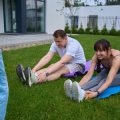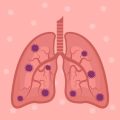Introduction to Pulmonary Rehabilitation in the UK
Pulmonary rehabilitation is a cornerstone of care for individuals living with chronic respiratory conditions across the United Kingdom. Rooted in evidence-based practice, this multifaceted programme brings together exercise training, education, and emotional support to help people better manage their lung health. Within the NHS and broader UK healthcare system, pulmonary rehabilitation plays a vital role not only in alleviating symptoms such as breathlessness and fatigue, but also in enhancing patients’ confidence and independence in daily life. Its significance is increasingly recognised as the prevalence of conditions like chronic obstructive pulmonary disease (COPD), asthma, and interstitial lung disease continues to rise. By offering structured support tailored to each individual’s needs, pulmonary rehabilitation empowers participants to understand their condition, improve physical fitness, and adopt healthier lifestyle choices. Ultimately, it fosters a sense of hope and belonging—reminding those affected that they are not alone on their journey towards better respiratory health.
2. Core Components of Pulmonary Rehabilitation Programmes
Pulmonary rehabilitation (PR) in the UK is a holistic, multidisciplinary approach designed to support individuals living with chronic respiratory conditions such as COPD, asthma, and interstitial lung diseases. The structure of PR programmes across the UK reflects both evidence-based practice and sensitivity to local community needs, ensuring that each participant receives tailored, compassionate care.
The Multidisciplinary Team Approach
One of the unique strengths of UK-based pulmonary rehabilitation is its collaborative framework. Programmes are typically delivered by a team comprising:
| Role | Main Responsibilities |
|---|---|
| Respiratory Physiotherapist | Leads exercise sessions, assesses mobility and breathlessness, adapts exercise plans |
| Respiratory Nurse | Monitors health status, provides medication guidance, manages exacerbations |
| Occupational Therapist | Offers strategies for daily living activities and energy conservation |
| Dietetics Specialist | Supports nutritional advice for optimal health and weight management |
| Clinical Psychologist or Counsellor | Addresses emotional wellbeing, anxiety, and depression associated with chronic illness |
Exercise Training: Building Physical Resilience
The foundation of any PR programme is a structured exercise component. Typically delivered in group settings at community health centres or hospitals, these sessions include aerobic activities (such as walking or cycling), strength training with resistance bands or light weights, and flexibility exercises. Exercise plans are always tailored to individual ability levels and closely monitored for safety.
Example Exercise Session Structure:
- Warm-up (gentle stretching and breathing exercises)
- Aerobic training (walking circuits or stationary cycling)
- Strengthening exercises (using hand weights or bodyweight)
- Cool-down (relaxation techniques and stretching)
Education: Empowering Self-Management
Education is an integral pillar of UK pulmonary rehabilitation services. Sessions cover topics such as understanding lung conditions, managing breathlessness, recognising symptoms of exacerbations, using inhalers correctly, smoking cessation support, and guidance on healthy eating. Participants are encouraged to ask questions and share experiences within a supportive environment.
Psychosocial Support: Nurturing Emotional Wellbeing
Coping with chronic respiratory disease can be emotionally challenging. British PR programmes address this by providing access to psychological support—either through group discussions facilitated by trained staff or through referrals to mental health professionals when needed. Peer support is also highly valued; many find comfort in connecting with others facing similar challenges.
Summary Table: Core Components of UK Pulmonary Rehabilitation
| Component | Description |
|---|---|
| Multidisciplinary Care | Collaboration between physiotherapists, nurses, dietitians, occupational therapists, and psychologists ensures comprehensive support. |
| Exercise Training | Tailored aerobic and strength-building activities enhance physical fitness and daily function. |
| Education | Covers disease knowledge, medication use, lifestyle modifications, and self-management strategies. |
| Psychosocial Support | Counselling and peer interaction foster emotional resilience and motivation. |
This integrated approach lies at the heart of pulmonary rehabilitation in the UK—empowering people not only to manage their condition but also to live fuller, more active lives within their communities.
![]()
3. Patient Eligibility and Referral Pathways
Pulmonary rehabilitation in the UK is a vital service for individuals living with chronic respiratory conditions such as COPD, interstitial lung disease, and bronchiectasis. Ensuring equitable access begins with clear eligibility and referral processes, predominantly coordinated through the NHS. Patients are typically considered for pulmonary rehabilitation if they exhibit persistent symptoms—such as breathlessness or reduced physical capacity—that impact daily life. Most commonly, General Practitioners (GPs), respiratory consultants, or specialist nurses initiate referrals following a clinical assessment. The referral pathway may also be triggered during hospital admissions for acute exacerbations, ensuring timely support post-discharge.
Upon referral, each patient undergoes a comprehensive assessment using nationally recognised criteria. This includes spirometry to confirm diagnosis, evaluation of functional limitation through tools like the Medical Research Council (MRC) Dyspnoea Scale, and consideration of comorbidities that may affect participation. Across the UK, multidisciplinary teams work collaboratively to tailor rehabilitation plans, taking into account social circumstances and individual goals.
The most common pathway involves a structured journey: from initial GP or hospital referral, onward to assessment by a local pulmonary rehab team—usually within community health centres or NHS Trust settings. Some regions offer digital self-referral options or telephone triage to streamline the process and reduce waiting times. Throughout, there is an emphasis on patient choice and shared decision-making, empowering individuals to engage actively in their care journey.
Ultimately, these pathways aim not only to provide clinical benefit but also to foster confidence and independence for people living with respiratory illness across the UK’s diverse communities.
4. Innovative Practices and Digital Integration
In recent years, pulmonary rehabilitation in the UK has experienced a transformative shift, thanks to the integration of innovative practices and digital solutions. These advancements not only enhance patient engagement but also extend the reach of rehabilitation services to those who may face barriers attending traditional in-person programmes. Below, we explore the most significant innovations shaping pulmonary rehabilitation across Britain.
Digital Tools for Self-Management
With the rise of user-friendly mobile applications and online platforms, patients are now better equipped to monitor their symptoms, access educational resources, and track their progress from home. Popular NHS-endorsed apps help individuals set personalised goals, record daily activities, and receive instant feedback, fostering a greater sense of autonomy in managing long-term respiratory conditions.
Remote Monitoring for Enhanced Support
Remote monitoring technologies have become increasingly vital, especially in rural areas or for those with limited mobility. Devices such as pulse oximeters and digital spirometers allow healthcare professionals to remotely observe patient health metrics, enabling timely intervention when needed. The following table highlights some commonly used remote monitoring tools in UK pulmonary rehabilitation:
| Tool | Main Function | Benefits for Patients |
|---|---|---|
| Pulse Oximeter | Measures blood oxygen saturation | Early detection of exacerbations |
| Digital Spirometer | Monitors lung function | Regular tracking without clinic visits |
| Activity Tracker Apps | Records physical activity levels | Motivates daily movement goals |
Virtual Rehabilitation Sessions
The adoption of virtual pulmonary rehabilitation sessions has dramatically increased, particularly since the COVID-19 pandemic. Through secure video conferencing platforms, multidisciplinary teams—comprising physiotherapists, nurses, and occupational therapists—deliver exercise classes, breathing techniques, and educational workshops directly to patients’ homes. This model provides flexibility and continuity of care while respecting individual preferences and needs.
Key Advantages of Virtual Programmes:
- Greater accessibility for those in remote or underserved communities
- Reduced travel time and associated costs
- The ability to tailor session times around personal commitments
A Compassionate Approach Moving Forward
The embrace of digital innovation within UK pulmonary rehabilitation reflects a broader commitment to person-centred care. By blending technological advancements with the warmth of professional support, these new practices ensure that every individual receives the encouragement and practical tools they need on their journey toward better respiratory health.
5. Outcomes, Quality Standards, and Patient Experience
Understanding the Evidence-Based Outcomes
Pulmonary rehabilitation in the UK is underpinned by a robust evidence base demonstrating significant improvements for individuals living with chronic respiratory conditions. Outcomes commonly assessed include increased exercise tolerance, reduced breathlessness, improved mental wellbeing, and enhanced overall quality of life. NHS data and independent research consistently show that participants often experience fewer hospital admissions and a marked reduction in exacerbations. These positive changes are not only meaningful for patients but also beneficial for carers, who often report feeling more confident in supporting their loved ones.
National Quality Frameworks Guiding Care
The quality of pulmonary rehabilitation programmes across the UK is maintained through adherence to nationally recognised frameworks such as those developed by the British Thoracic Society (BTS) and National Institute for Health and Care Excellence (NICE). These standards ensure that all services offer evidence-based interventions delivered by qualified multidisciplinary teams. Programmes are regularly audited using metrics like completion rates, patient-reported outcome measures (PROMs), and safety records. This commitment to quality means that wherever you access pulmonary rehab in the UK, there is a consistent expectation of high standards and person-centred care.
The Lived Experience: Patients and Carers at the Heart
While clinical outcomes are vital, the true measure of pulmonary rehabilitation’s success lies in the lived experiences of patients and their carers. Many people describe regaining independence through learning to manage symptoms more effectively and feeling less isolated thanks to group sessions. Peer support is a cornerstone—sharing challenges and triumphs with others facing similar journeys fosters a sense of belonging. Carers benefit from inclusion in education sessions, gaining practical tools and reassurance. Feedback from service users is actively sought via surveys and forums, shaping ongoing innovations and ensuring that programmes remain responsive to real-world needs.
A Gentle Word on Ongoing Support
Pulmonary rehabilitation does not end when the formal programme finishes. Follow-up support—whether through community exercise classes, online resources, or peer groups—is essential for sustaining gains. The NHS Long Term Plan continues to prioritise access and continuity for those who may need additional help along the way. Ultimately, pulmonary rehab in the UK strives not just for better breathing, but for better living—offering hope, companionship, and empowerment at every step.
6. Overcoming Challenges and Supporting Long-Term Wellbeing
Practical Advice for Ongoing Self-Management
Pulmonary rehabilitation is not just a short-term intervention—it’s a vital stepping stone towards long-term self-management for individuals living with chronic respiratory conditions across the UK. After completing a pulmonary rehabilitation programme, it’s essential to maintain the routines and strategies learned. Setting realistic daily goals, keeping an activity diary, and using reminders for medication or exercises can help you stay on track. Don’t hesitate to reach out to your healthcare team if you need adjustments to your plan or further advice.
Utilising Community Resources
The UK offers a wealth of community resources designed to support people managing long-term lung conditions. Local leisure centres may provide adapted exercise classes, while organisations such as the British Lung Foundation offer support groups and online forums. Connecting with others who share similar experiences can be both comforting and motivating. Additionally, many areas have “Breathe Easy” groups—these are friendly gatherings where you can share tips, enjoy social activities, and learn more about living well with a lung condition.
Maintaining Independence Through Ongoing Support
Pulmonary rehabilitation empowers individuals to take charge of their health, but ongoing support is crucial for maintaining independence. Continuing with regular exercise, monitoring symptoms, and recognising early signs of exacerbation can help prevent hospital admissions. Family members and carers also play an important role; involving them in your care plan ensures that everyone is prepared to respond effectively if challenges arise.
Innovations in Long-Term Care
The landscape of pulmonary care in the UK continues to evolve, with innovations such as remote monitoring apps and telehealth consultations making it easier than ever to stay connected with clinical teams from home. These tools provide reassurance and expert guidance between in-person appointments, helping you feel supported every step of the way.
A Gentle Reminder
Remember, progress in managing a chronic lung condition is often gradual. Celebrate small victories—whether it’s walking a little further or managing breathlessness more calmly. With compassion, patience, and the right support network, you can continue to live independently and embrace the joys of daily life in your community.


